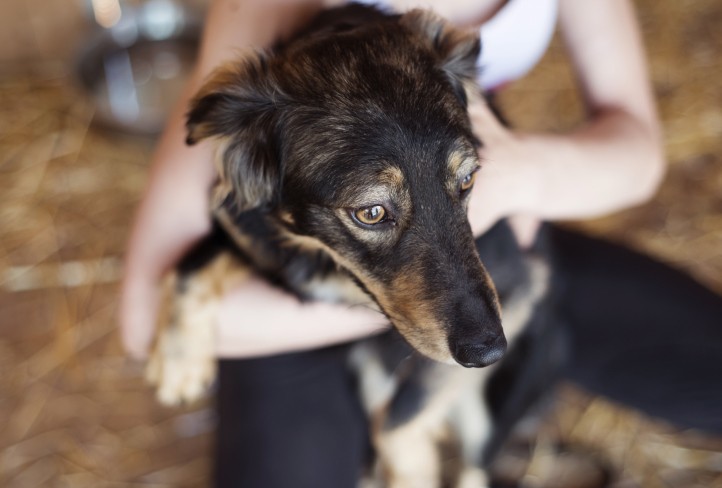Canine Epilepsy: 12 Important Tips if Your Dog Has a Seizure
Once upon a time, euthanasia was the suggested protocol for dogs with seizure disorders or Canine Epilepsy (Epi-dogs), but, thankfully, that is so not the case today!
Now, there are many resources and healthcare routes to explore, both medical and alternative that just didn’t exist years ago. Having a trusting, solid relationship with your veterinarian is key. There are also some wonderful online support groups where members share their stories, recommendations, treatment options, and support. The important thing to remember is that you are not alone.
Your dog just had a seizure. Now what should you do?
1. Got to the Vet
The first thing to do when your dog has experienced a seizure is get him/her to the vet. It’s important to be sure there is no serious underlying health issue causing the seizure. The vet will run some tests, and depending on your dog’s diagnosis, you will discuss different courses of treatment. Or, you may be advised to wait to see if s/he has another, as it could be just a one-time occurrence.
2. Research. Research. Research
Do all the research you can on Canine Epilepsy, seizures, food and environmental triggers, medications, alternative therapies, and treatments, etc. Become your own personal expert on the disease so you can have well-informed conversations about your dog’s care with your veterinarian.
3. Network
There are some excellent Canine Epilepsy online resources, including various organizations, social media pages and groups, and listserv groups, including the Canine Epilepsy Resources Epil-K9 Email list.
4. Stay Calm
As hard as this is… it’s important for both you and your dog that you remain calm before, during, and after a seizure.
5. Think Cool
Seizure activity can drive a dog’s temperature up dangerously high. Place instant ice packs (frozen peas, frozen veggies, even loaves of frozen bread will do in a pinch) behind your dog’s neck, under the “arm pits” of his legs, back of neck, and belly. Also cool down the paw pads with cool water.
6. Give a Snack
After dogs come out of a seizure, a little all-natural vanilla ice cream, honey, or natural maple syrup will help to raise their sugar levels back up. Follow with a protein such as little kibble, cheese stick, a spoonful of cottage cheese, chicken, etc. to help stabilize those sugar levels.
7. Water Is a Must
Let your dog take some sips of water.
8. Think Safety
Your dog may experience confusion and temporary blindness post-seizure. Be sure s/he is in a safe area (no stairs, wires, etc.).
9. Give Hugs and Reassurance
Speak in soft, reassuring tones repeating your dog’s name as you pet and hold your dog close. He won’t remember his seizure, but he may come out of one shaken. A familiar voice and a little calming influence will go a long way in keeping him/her calm.
10. Secure Family Pets
It’s a good idea to keep other family pets safely secured in another room while your dog is having seizures. The other pets can get confused and may even attack the seizing dog out of fear.
11. Journal
Start a journal and note the date and time of the seizure(s), how long it lasted, how your dog acted, what your dog was doing before seizure, what the weather was like, was your dog out in the yard, was the TV on, how long the postictal stage lasted, etc. These notes are very important to help create a seizure log and discuss with your vet.
12. First Aid Kit
If you don’t already have a First Aid Kit for your Epi-dog, now is a good time to create one. Include items such as the journal, medications, natural calming aids, instant ice packs, dog ear thermometer, vet and emergency hospital contact numbers, honey or maple syrup, moist wipes for post-seizure cleanup, etc.
Seeing your dog have a seizure is a scary thing to witness. But, with some special care, and lots of love, Epi-dogs can – and do – live full, happy lives!
Dorothy Wills-Raftery
Dorothy Wills-Raftery is an award-winning photojournalist and author of EPIC Dog Tales: Heartfelt Stories About Amazing Dogs Living & Loving Life With Canine Epilepsy; the FiveSibes™ Tales children’s books: What’s Wrong With Gibson? Learning About K-9 Epilepsy and Getting Healthy With Harley: Learning About Health & Fitness; and Buddy, the Christmas Husky~Based On A True Holiday Miracle books (ArcticHouse Publishing), as well as the FiveSibes.com, an online encyclopedia for the Siberian Husky breed and Canine Epilepsy information, as well as her international award-winning FiveSibes blog, based on the lives of her five Siberian Huskies. Her work has also appeared in American Pet Magazine, Ruff Drafts, The Sled Dogger, and Hudson Valley Paw Print Magazine. Dorothy is the writer and host of "The Sibe Vibe” Dog Works Radio show.
Dorothy is a 9-time Dog Writers of America Association “Excellence” nominee, winning the prestigious Maxwell Medallion in 2017 and 2016 for her writing, photography, and design. Her book EPIC Dog Tales: Heartfelt Stories About Amazing Dogs Living & Loving Life With Canine Epilepsy received the 2018 Independent Press Award for “Excellence” in the Reference Book category and 2017 NYC Big Book Award for “Excellence” in the Animal/Pet book category. Dorothy was also named “Best Author” in 2015 & 2016 by Hudson Valley Magazine and all four books named “Best in Print” by American Pet Magazine, An official International Purple Day® for Epilepsy Ambassador since 2012 and a volunteer case manager for The Wally Foundation-Canine Epilepsy, Dorothy is the creator of the FiveSibes #LiveGibStrong K-9 Epilepsy Awareness campaign and partnered with The Anita Kaufmann Foundation for #Paws4Purple Project, both inspired by her own epileptic Husky, Gibson. In addition to her Siberian Huskies, Dorothy shares her home with her husband, daughter, son-in-law, and grandson. You can follow Dorothy and her FiveSibes on Facebook at FiveSibes: Siberian Husky K9 News & Reviews, on Google + , Twitter, and Instagram(@FiveSibesMom).





